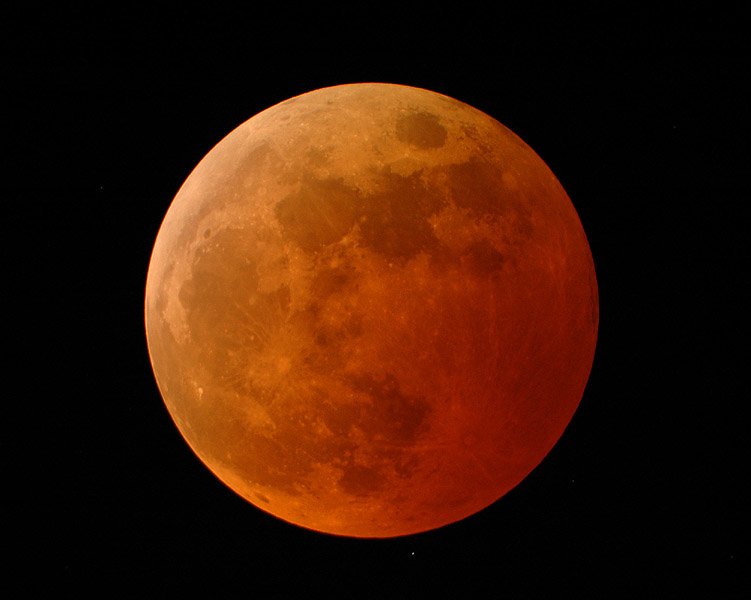As we noted a few times this month, a lunar eclipse is happening soon and while lunar eclipses occur twice a year, this is the first time on the Winter Solstice since 1554 A.D. The second most popular question we get about lunar eclipses (First being "Is it safe to look at? Answer: "Yes") involves the reddish color - people want to know why the moon looks red during a lunar eclipse.
First, the basics: A lunar eclipse happens when the moon, Earth, and the sun all line up with Earth in the middle. It is an eclipse because Earth's shadow is cast onto the full moon which dims its surface.
It is because it dims rather than obscures it that we see it as reddish instead of dark as when a solar eclipse occurs. The red hue happens because we have a dust-filled atmosphere which filters the sunlight shining through it, the same reason the sun looks reddish during sunrises and sunsets. So our planet won't make the moon completely dark because our atmosphere filters the sunlight so it looks reddish instead.
Lunar eclipse. Credit: NASA
The color during a lunar eclipse can be anywhere from gray to bright orange, depending on the dust in the atmosphere.
"If you were on the moon during totality, you would look back at the Earth and see a ring of red light around the perimeter—the red light of all the sunsets and sunrises going on at Earth at that moment," astronomer Benjamin Burress told National Geographic.
The moon's color during a lunar eclipse can vary from dark gray to blazing orange, according to the amount of dust in Earth's atmosphere at the time.
"A volcanic eruption can put more dust into the atmosphere and increase the effect," Burress said. "Air pollution can do the same."
There hasn't been an eruption recently so astronomers are forecasting a bright orange color for the 2010 winter solstice eclipse.
Find out how a volcanic eruption in 1761 may have caused an especially dark total lunar eclipse.
National Geographic also has a variety of pictures and articles related to the event. See solstice pictures, fire rites, druids, and more.




Comments